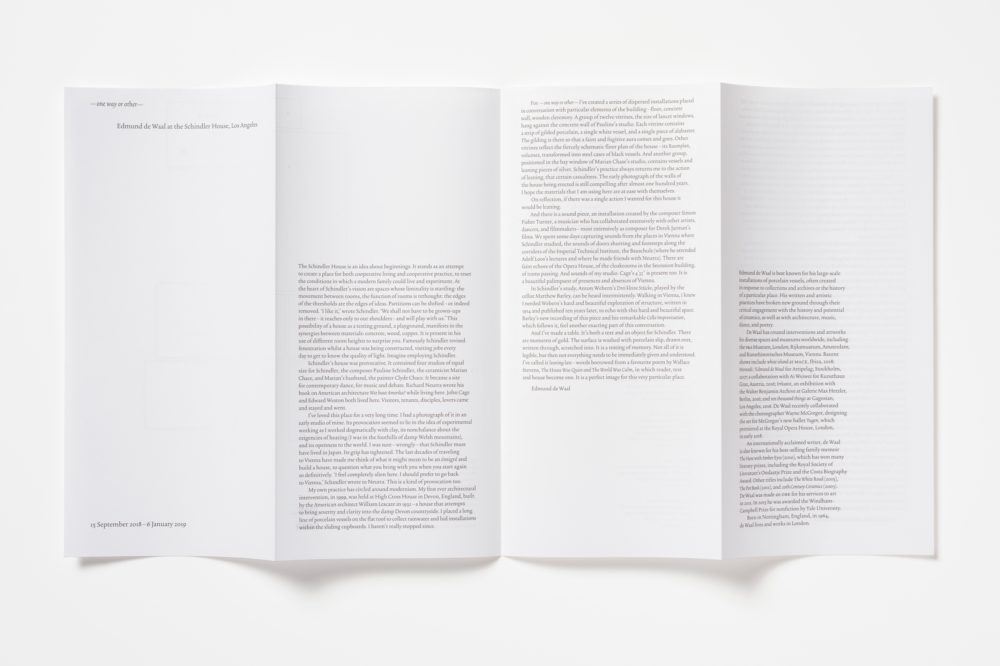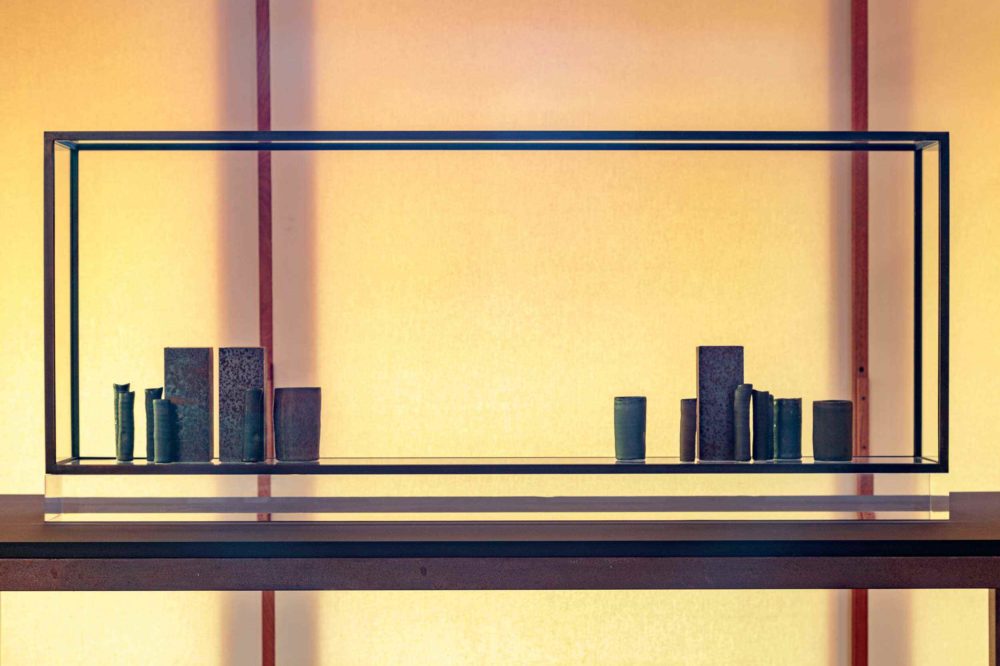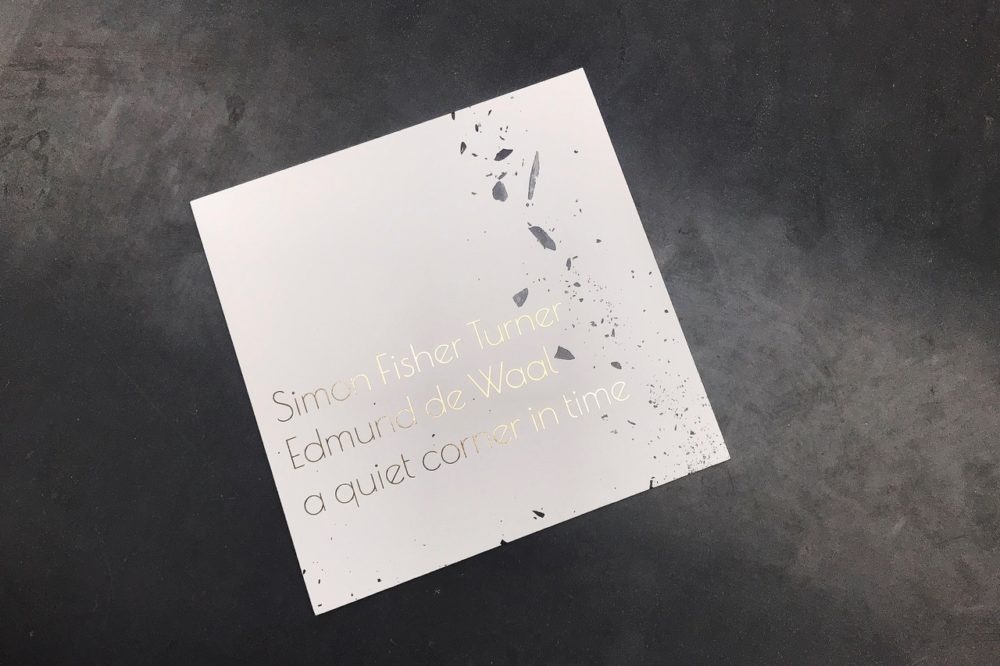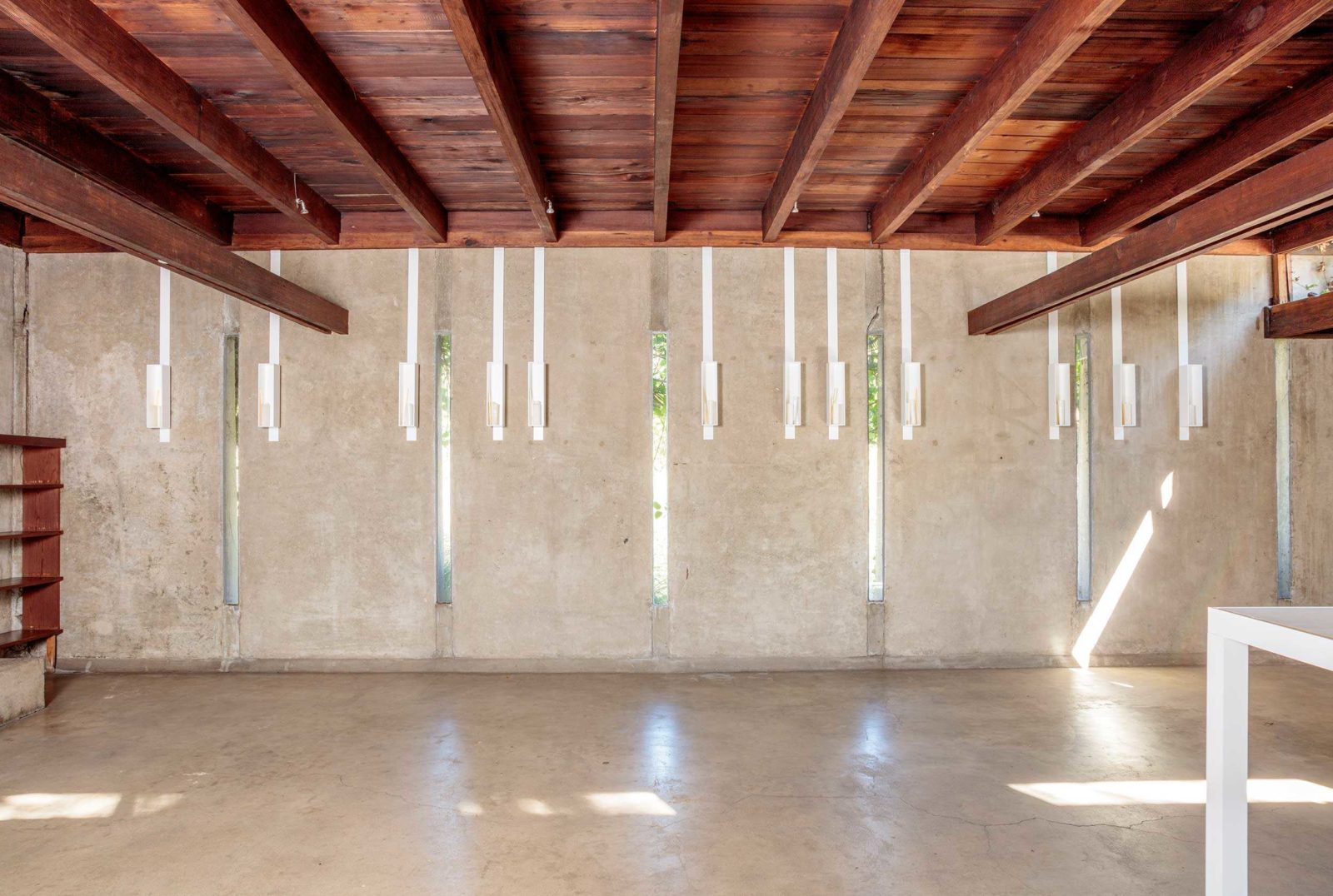
– one way or other –2018
12 porcelain vessels, 12 gilded porcelain tiles and 13 alabaster blocks in 12 open aluminium vitrines suspended from wires
35.2 × 8.5 × 10.5 cm each
– one way or other –
Schindler House, Los Angeles
15 September 2018 – 6 January 2019
De Waal’s first architectural intervention in America was at the Schindler House in West Hollywood: a landmark of West Coast Modernism, built in 1922 by Viennese émigré architect, Rudolph Schindler. Conceived as a modular, changeable live-work building for two families, it became a site of forward-thinking aesthetic, cultural and political activity, frequented by architects, dancers and artists from Frank Lloyd Wright to John Cage.
For de Waal, the Schindler House 'is an idea about beginnings. It stands as an attempt to create a place for both cooperative living and cooperative practice, to reset the conditions in which a modern family could live and experiment...The last decades of travelling to Vienna have made me think of what it might mean to be an émigré and build a house, to question what you bring with you when you start again so definitively.’ The exhibition included works which respond directly to the materials and spaces of the house, and a sound piece conceived with the composer, Simon Fisher Turner, 'a layered memory soundscape of Vienna through its Raumplan, its volumes’.
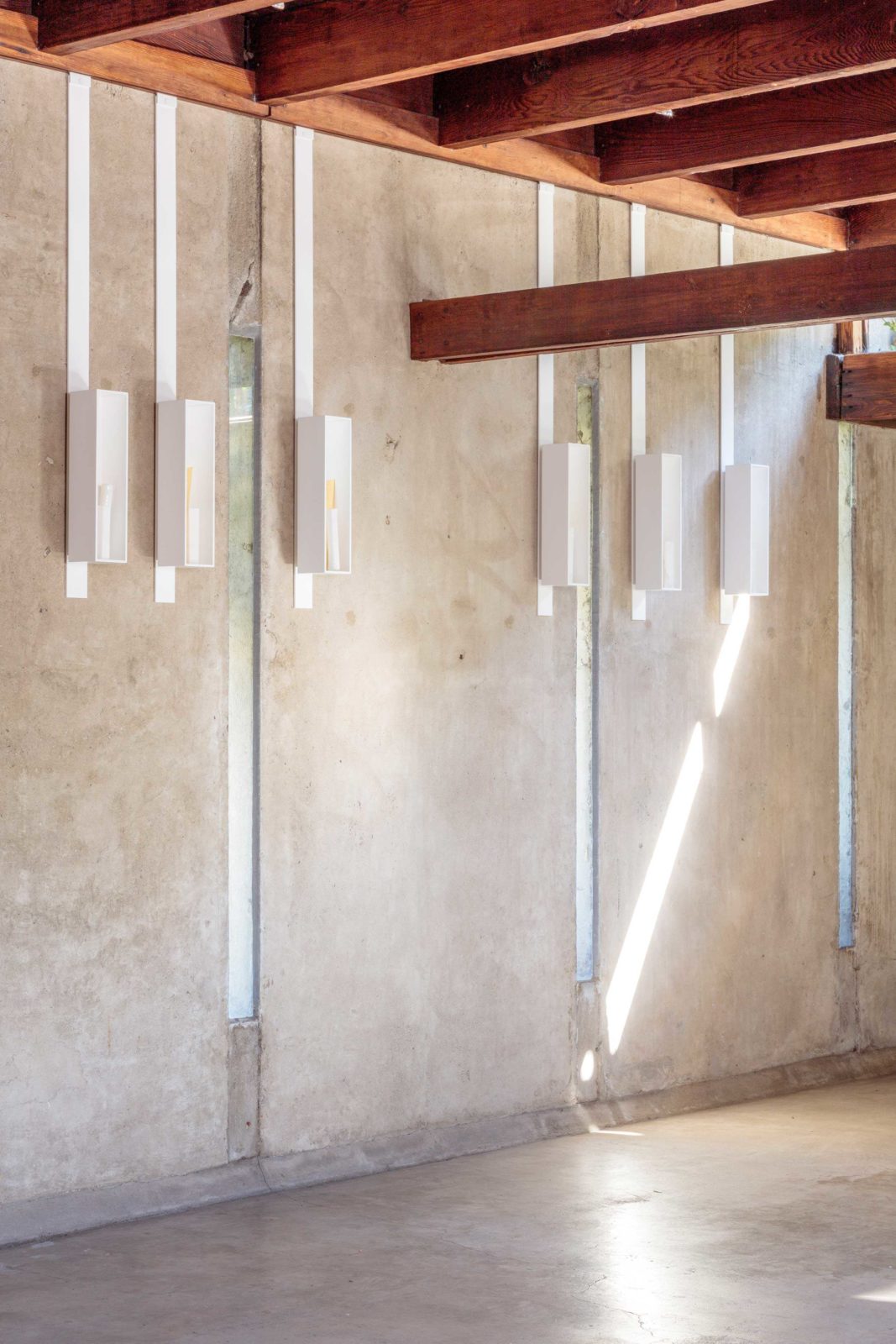
– one way or other –2018
12 porcelain vessels, 12 gilded porcelain tiles and 13 alabaster blocks in 12 open aluminium vitrines suspended from wires
35.2 × 8.5 × 10.5 cm each
– one way or other –
Schindler House, Los Angeles
15 September 2018 – 6 January 2019
De Waal’s first architectural intervention in America was at the Schindler House in West Hollywood: a landmark of West Coast Modernism, built in 1922 by Viennese émigré architect, Rudolph Schindler. Conceived as a modular, changeable live-work building for two families, it became a site of forward-thinking aesthetic, cultural and political activity, frequented by architects, dancers and artists from Frank Lloyd Wright to John Cage.
For de Waal, the Schindler House 'is an idea about beginnings. It stands as an attempt to create a place for both cooperative living and cooperative practice, to reset the conditions in which a modern family could live and experiment...The last decades of travelling to Vienna have made me think of what it might mean to be an émigré and build a house, to question what you bring with you when you start again so definitively.’ The exhibition included works which respond directly to the materials and spaces of the house, and a sound piece conceived with the composer, Simon Fisher Turner, 'a layered memory soundscape of Vienna through its Raumplan, its volumes’.
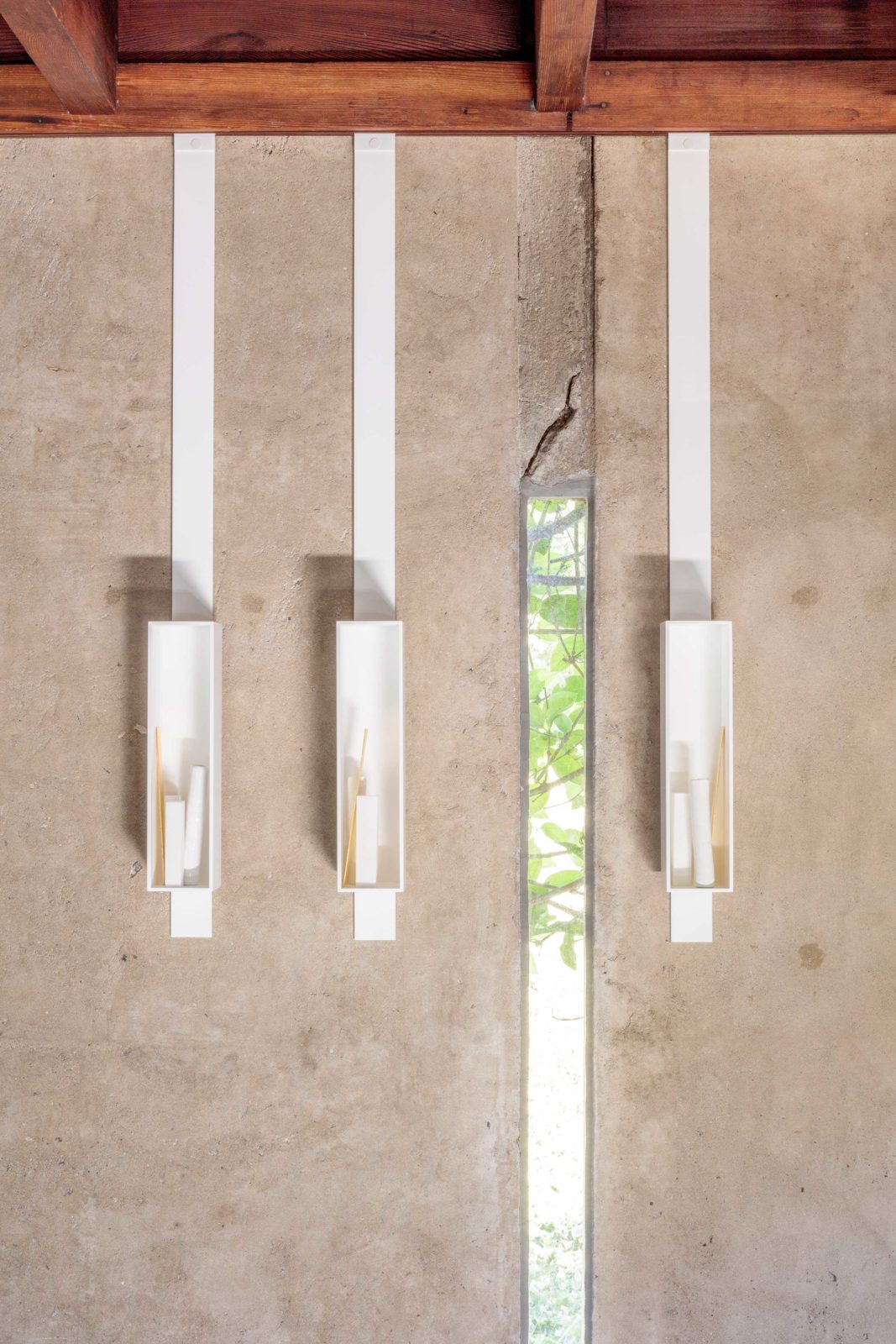
– one way or other –2018
12 porcelain vessels, 12 gilded porcelain tiles and 13 alabaster blocks in 12 open aluminium vitrines suspended from wires
35.2 × 8.5 × 10.5 cm each
– one way or other –
Schindler House, Los Angeles
15 September 2018 – 6 January 2019
De Waal’s first architectural intervention in America was at the Schindler House in West Hollywood: a landmark of West Coast Modernism, built in 1922 by Viennese émigré architect, Rudolph Schindler. Conceived as a modular, changeable live-work building for two families, it became a site of forward-thinking aesthetic, cultural and political activity, frequented by architects, dancers and artists from Frank Lloyd Wright to John Cage.
For de Waal, the Schindler House 'is an idea about beginnings. It stands as an attempt to create a place for both cooperative living and cooperative practice, to reset the conditions in which a modern family could live and experiment...The last decades of travelling to Vienna have made me think of what it might mean to be an émigré and build a house, to question what you bring with you when you start again so definitively.’ The exhibition included works which respond directly to the materials and spaces of the house, and a sound piece conceived with the composer, Simon Fisher Turner, 'a layered memory soundscape of Vienna through its Raumplan, its volumes’.
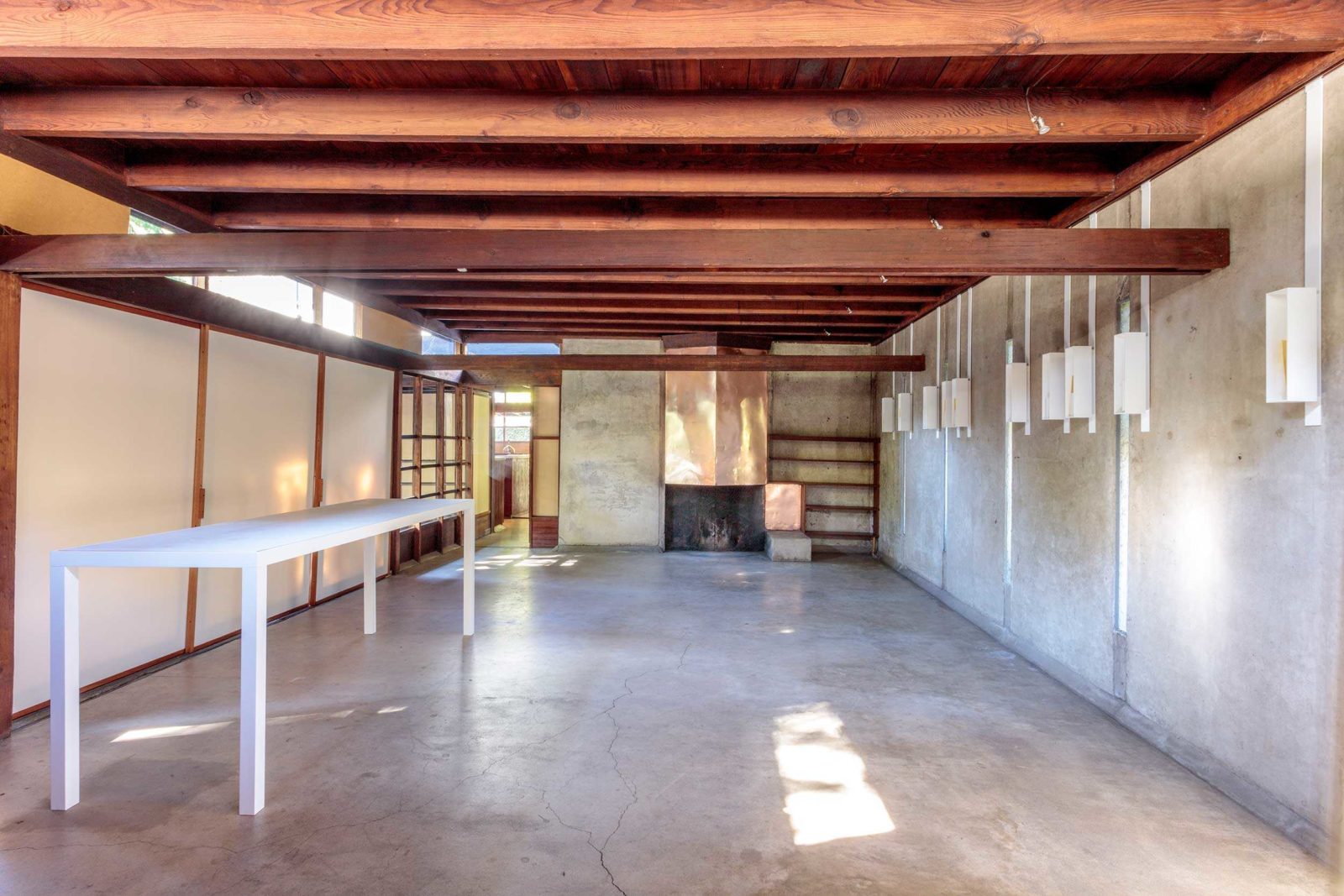
leaning late, – one way or other –2018
– one way or other –
Schindler House, Los Angeles
15 September 2018 – 6 January 2019
De Waal’s first architectural intervention in America was at the Schindler House in West Hollywood: a landmark of West Coast Modernism, built in 1922 by Viennese émigré architect, Rudolph Schindler. Conceived as a modular, changeable live-work building for two families, it became a site of forward-thinking aesthetic, cultural and political activity, frequented by architects, dancers and artists from Frank Lloyd Wright to John Cage.
For de Waal, the Schindler House 'is an idea about beginnings. It stands as an attempt to create a place for both cooperative living and cooperative practice, to reset the conditions in which a modern family could live and experiment...The last decades of travelling to Vienna have made me think of what it might mean to be an émigré and build a house, to question what you bring with you when you start again so definitively.’ The exhibition included works which respond directly to the materials and spaces of the house, and a sound piece conceived with the composer, Simon Fisher Turner, 'a layered memory soundscape of Vienna through its Raumplan, its volumes’.
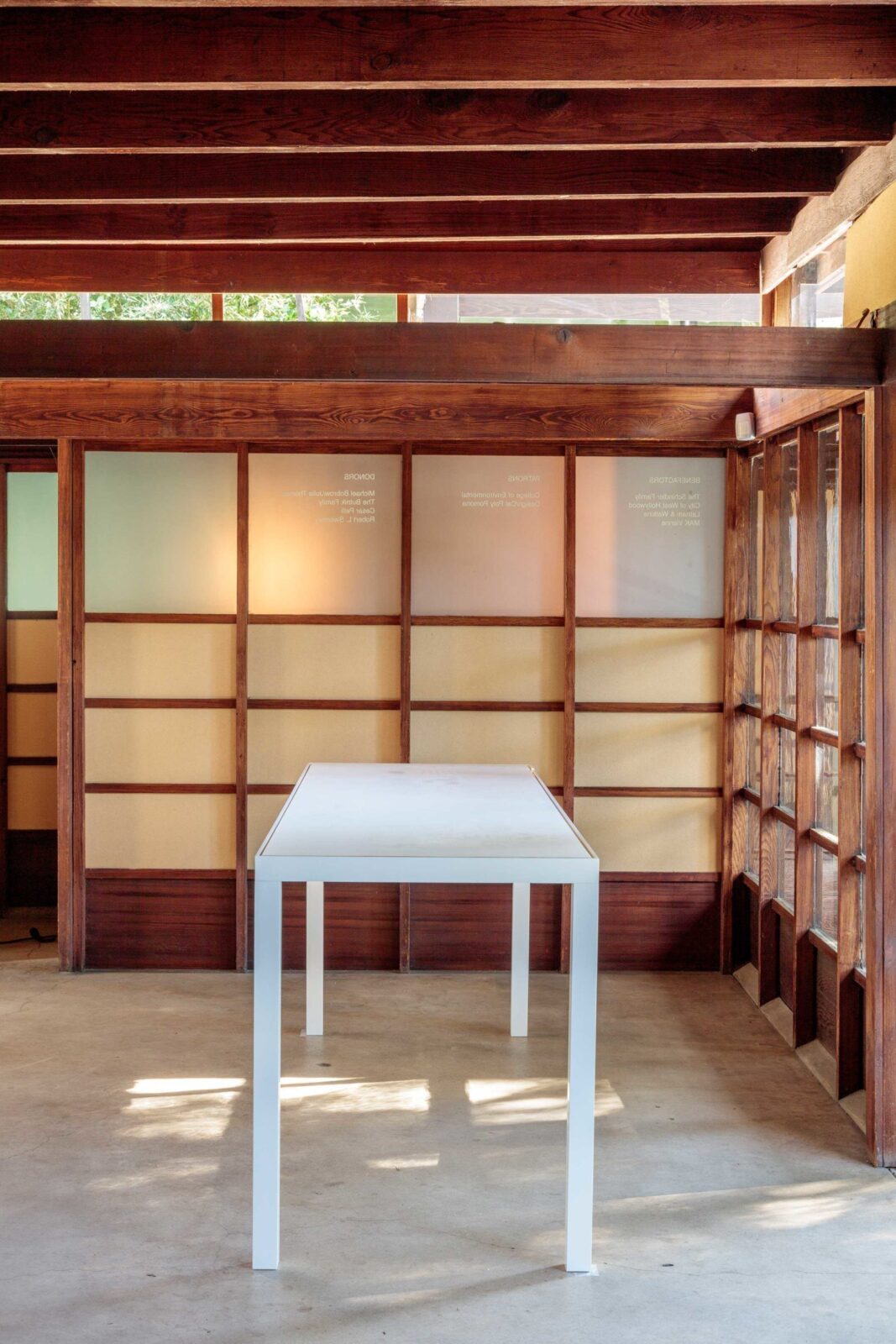
leaning late2018
Porcelain slip inscribed with handwritten text on a gold, wood and aluminium table
85 × 220 × 70 cm
– one way or other –
Schindler House, Los Angeles
15 September 2018 – 6 January 2019
De Waal’s first architectural intervention in America was at the Schindler House in West Hollywood: a landmark of West Coast Modernism, built in 1922 by Viennese émigré architect, Rudolph Schindler. Conceived as a modular, changeable live-work building for two families, it became a site of forward-thinking aesthetic, cultural and political activity, frequented by architects, dancers and artists from Frank Lloyd Wright to John Cage.
For de Waal, the Schindler House 'is an idea about beginnings. It stands as an attempt to create a place for both cooperative living and cooperative practice, to reset the conditions in which a modern family could live and experiment...The last decades of travelling to Vienna have made me think of what it might mean to be an émigré and build a house, to question what you bring with you when you start again so definitively.’ The exhibition included works which respond directly to the materials and spaces of the house, and a sound piece conceived with the composer, Simon Fisher Turner, 'a layered memory soundscape of Vienna through its Raumplan, its volumes’.
#835, 2015
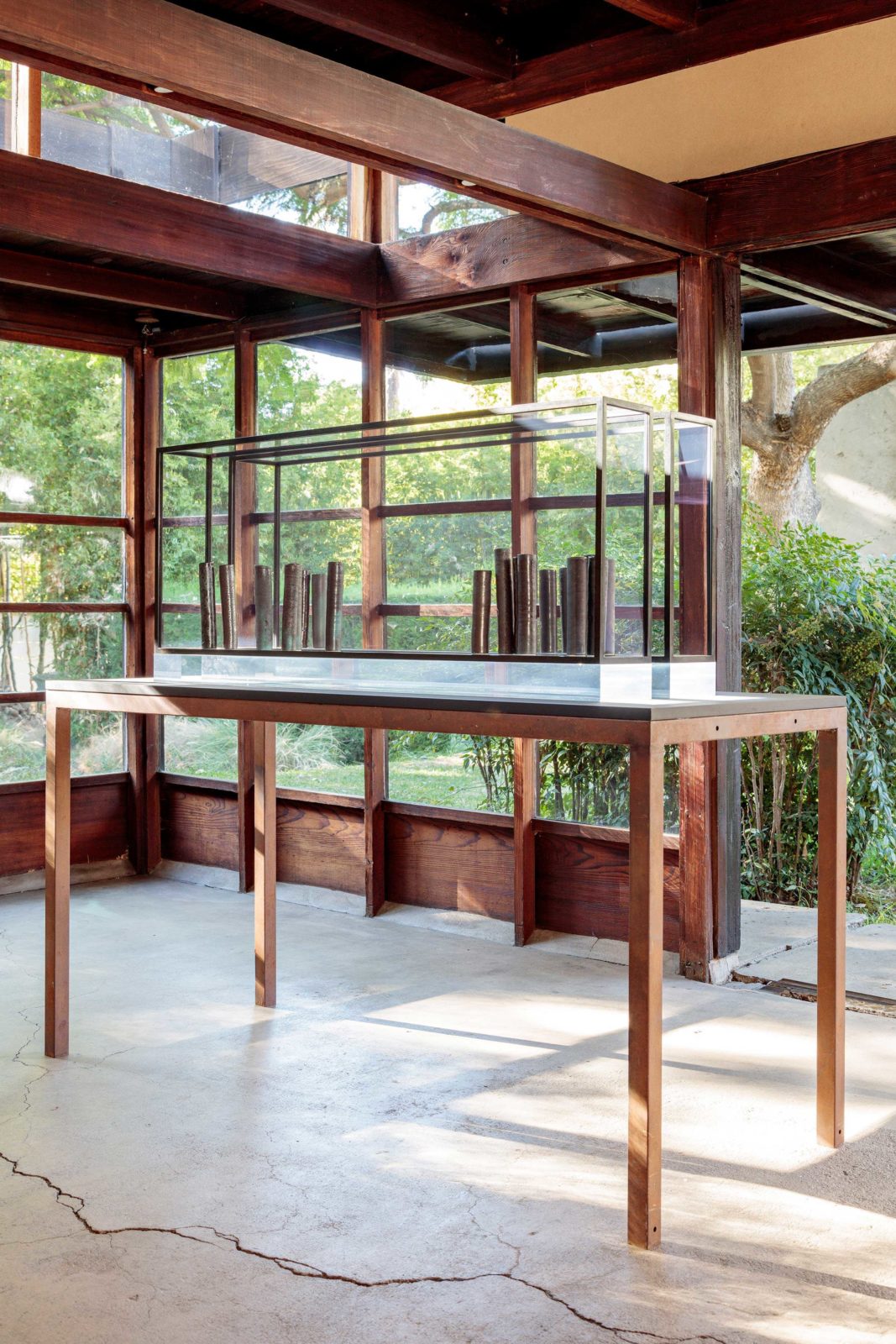
#835, 2015
18 porcelain vessels in 2 steel and plexiglass vitrines50 × 116 × 35 cm overall
– one way or other –
Schindler House, Los Angeles
15 September 2018 – 6 January 2019
De Waal’s first architectural intervention in America was at the Schindler House in West Hollywood: a landmark of West Coast Modernism, built in 1922 by Viennese émigré architect, Rudolph Schindler. Conceived as a modular, changeable live-work building for two families, it became a site of forward-thinking aesthetic, cultural and political activity, frequented by architects, dancers and artists from Frank Lloyd Wright to John Cage.
For de Waal, the Schindler House 'is an idea about beginnings. It stands as an attempt to create a place for both cooperative living and cooperative practice, to reset the conditions in which a modern family could live and experiment...The last decades of travelling to Vienna have made me think of what it might mean to be an émigré and build a house, to question what you bring with you when you start again so definitively.’ The exhibition included works which respond directly to the materials and spaces of the house, and a sound piece conceived with the composer, Simon Fisher Turner, 'a layered memory soundscape of Vienna through its Raumplan, its volumes’.
#835, 2015
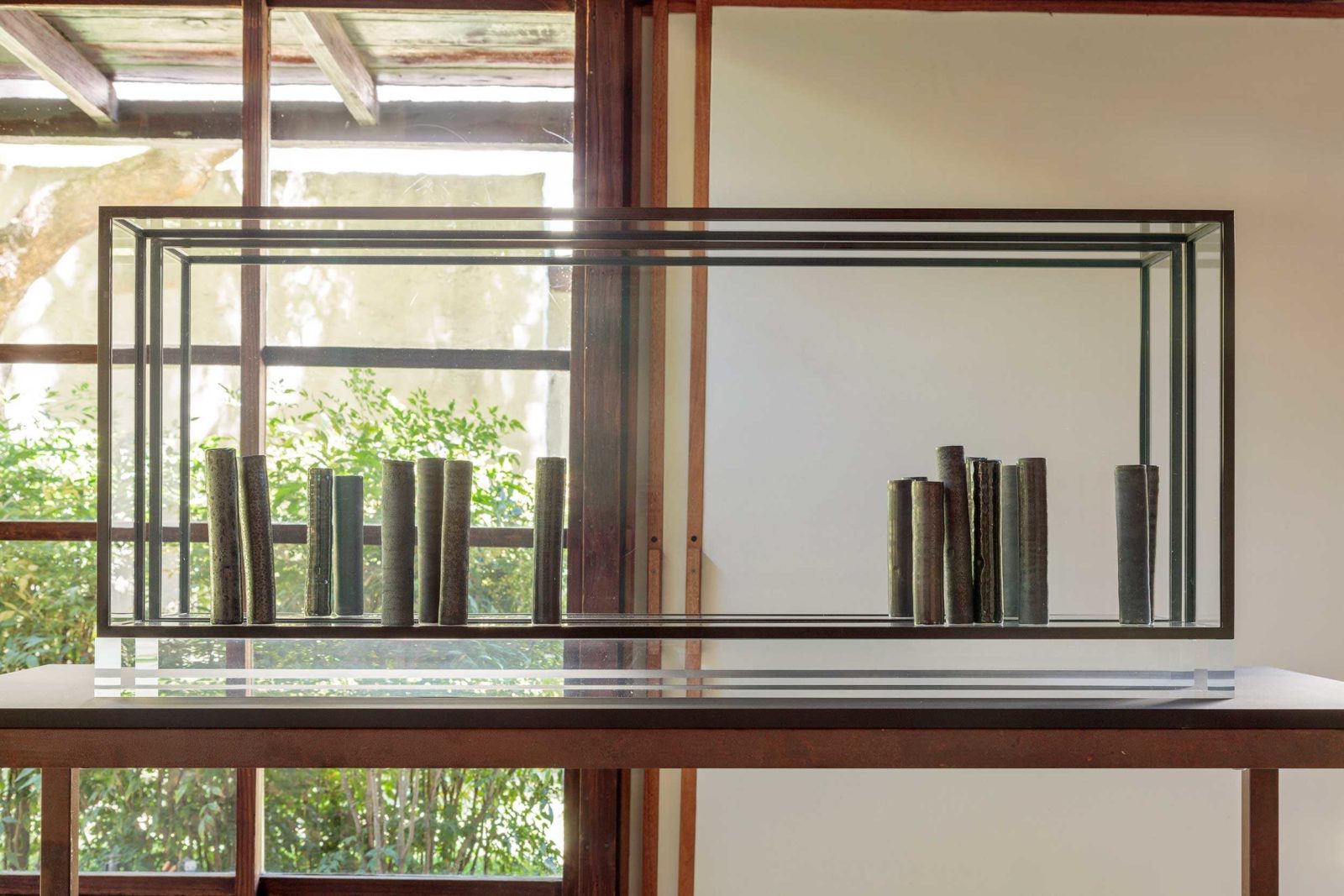
#835, 2015
18 porcelain vessels in 2 steel and plexiglass vitrines50 × 116 × 35 cm overall
– one way or other –
Schindler House, Los Angeles
15 September 2018 – 6 January 2019
De Waal’s first architectural intervention in America was at the Schindler House in West Hollywood: a landmark of West Coast Modernism, built in 1922 by Viennese émigré architect, Rudolph Schindler. Conceived as a modular, changeable live-work building for two families, it became a site of forward-thinking aesthetic, cultural and political activity, frequented by architects, dancers and artists from Frank Lloyd Wright to John Cage.
For de Waal, the Schindler House 'is an idea about beginnings. It stands as an attempt to create a place for both cooperative living and cooperative practice, to reset the conditions in which a modern family could live and experiment...The last decades of travelling to Vienna have made me think of what it might mean to be an émigré and build a house, to question what you bring with you when you start again so definitively.’ The exhibition included works which respond directly to the materials and spaces of the house, and a sound piece conceived with the composer, Simon Fisher Turner, 'a layered memory soundscape of Vienna through its Raumplan, its volumes’.
#835, 2015
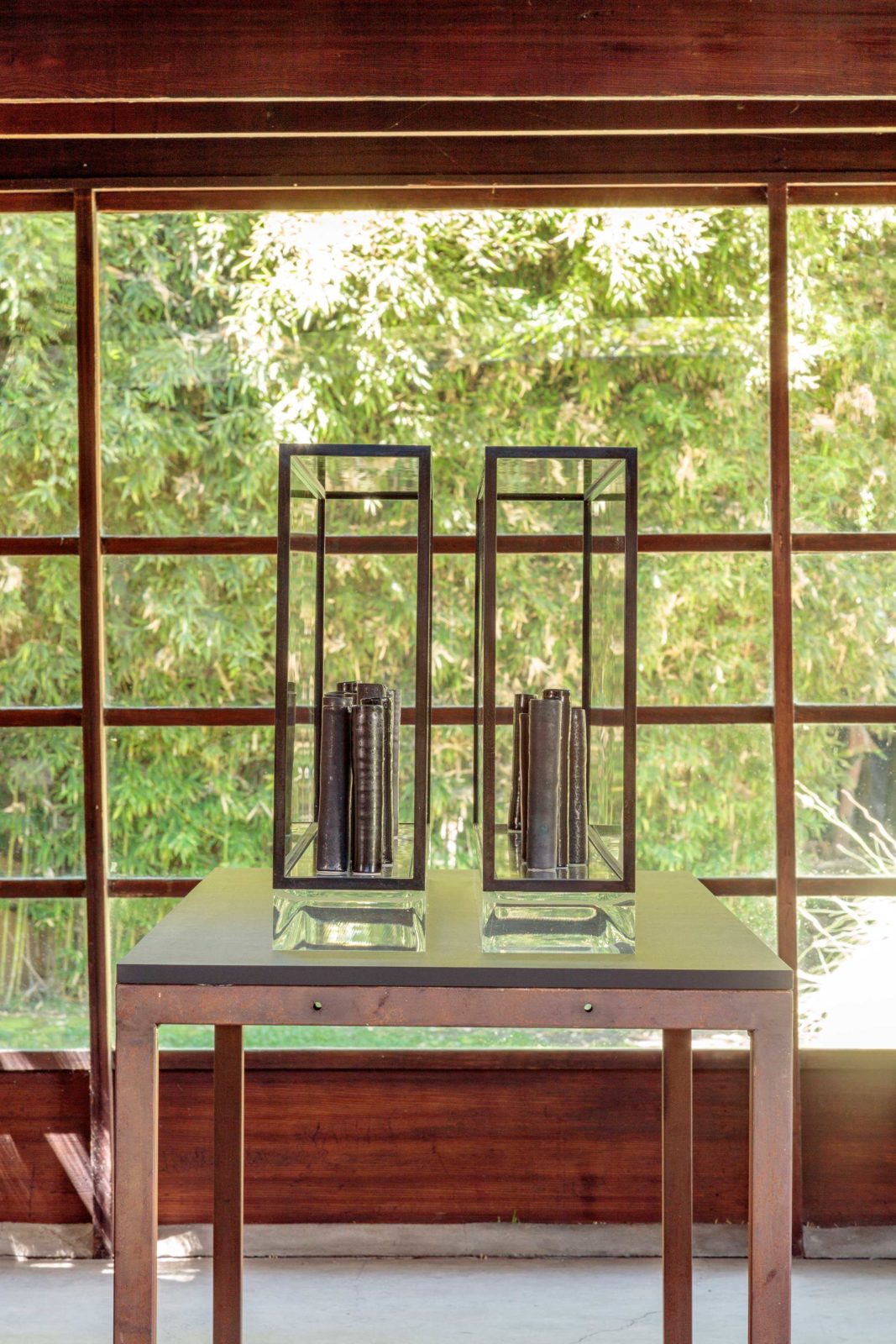
#835, 2015
18 porcelain vessels in 2 steel and plexiglass vitrines50 × 116 × 35 cm overall
– one way or other –
Schindler House, Los Angeles
15 September 2018 – 6 January 2019
De Waal’s first architectural intervention in America was at the Schindler House in West Hollywood: a landmark of West Coast Modernism, built in 1922 by Viennese émigré architect, Rudolph Schindler. Conceived as a modular, changeable live-work building for two families, it became a site of forward-thinking aesthetic, cultural and political activity, frequented by architects, dancers and artists from Frank Lloyd Wright to John Cage.
For de Waal, the Schindler House 'is an idea about beginnings. It stands as an attempt to create a place for both cooperative living and cooperative practice, to reset the conditions in which a modern family could live and experiment...The last decades of travelling to Vienna have made me think of what it might mean to be an émigré and build a house, to question what you bring with you when you start again so definitively.’ The exhibition included works which respond directly to the materials and spaces of the house, and a sound piece conceived with the composer, Simon Fisher Turner, 'a layered memory soundscape of Vienna through its Raumplan, its volumes’.
what's left (for Matthew), 2016
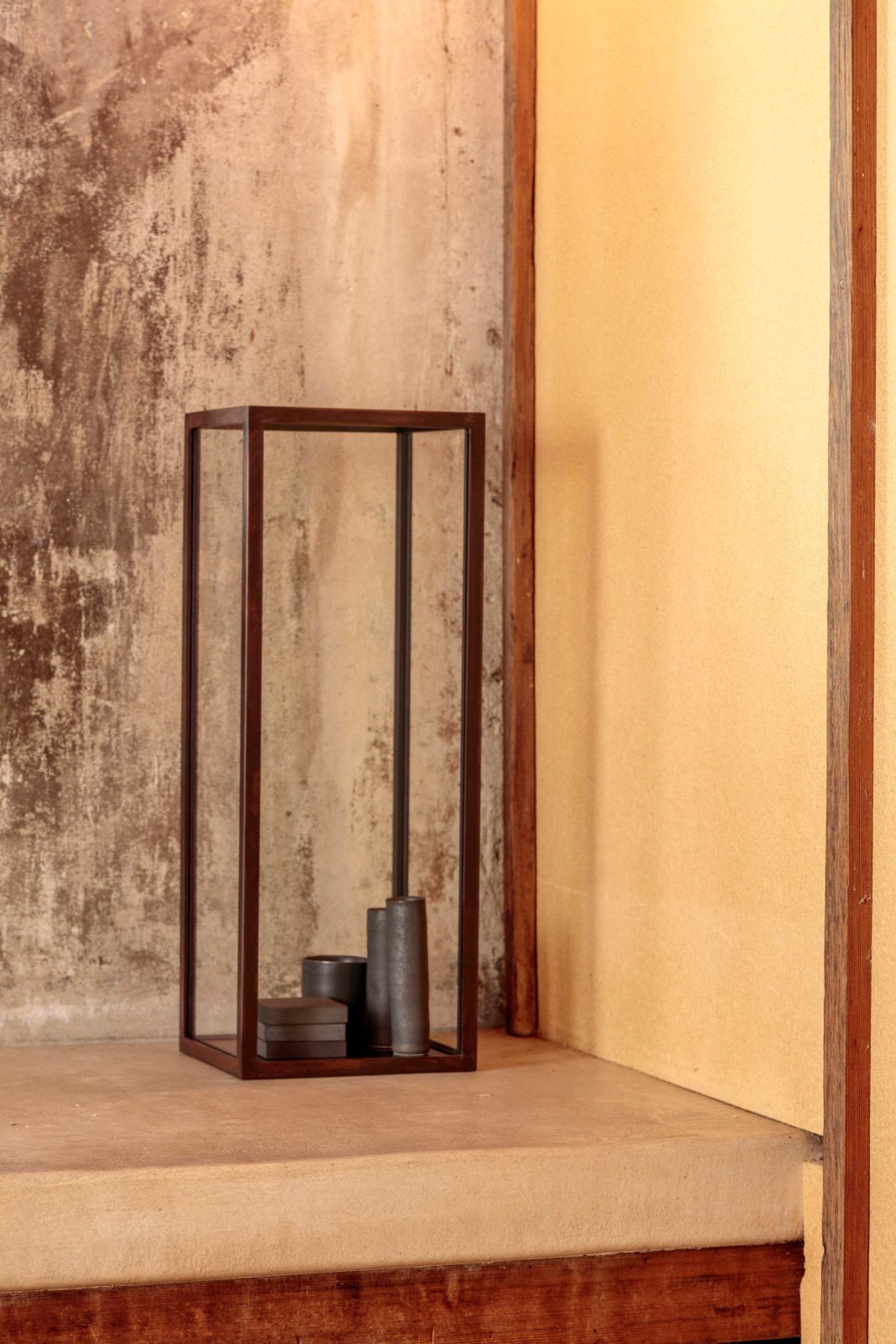
what's left (for Matthew), 2016
3 porcelain vessels and 3 graphite blocks in steel, corian and plexiglass vitrine53 × 16 × 18 cm
– one way or other –
Schindler House, Los Angeles
15 September 2018 – 6 January 2019
De Waal’s first architectural intervention in America was at the Schindler House in West Hollywood: a landmark of West Coast Modernism, built in 1922 by Viennese émigré architect, Rudolph Schindler. Conceived as a modular, changeable live-work building for two families, it became a site of forward-thinking aesthetic, cultural and political activity, frequented by architects, dancers and artists from Frank Lloyd Wright to John Cage.
For de Waal, the Schindler House 'is an idea about beginnings. It stands as an attempt to create a place for both cooperative living and cooperative practice, to reset the conditions in which a modern family could live and experiment...The last decades of travelling to Vienna have made me think of what it might mean to be an émigré and build a house, to question what you bring with you when you start again so definitively.’ The exhibition included works which respond directly to the materials and spaces of the house, and a sound piece conceived with the composer, Simon Fisher Turner, 'a layered memory soundscape of Vienna through its Raumplan, its volumes’.
Lettres de Londres: Sur l'Optique de Mr Newton, 2015
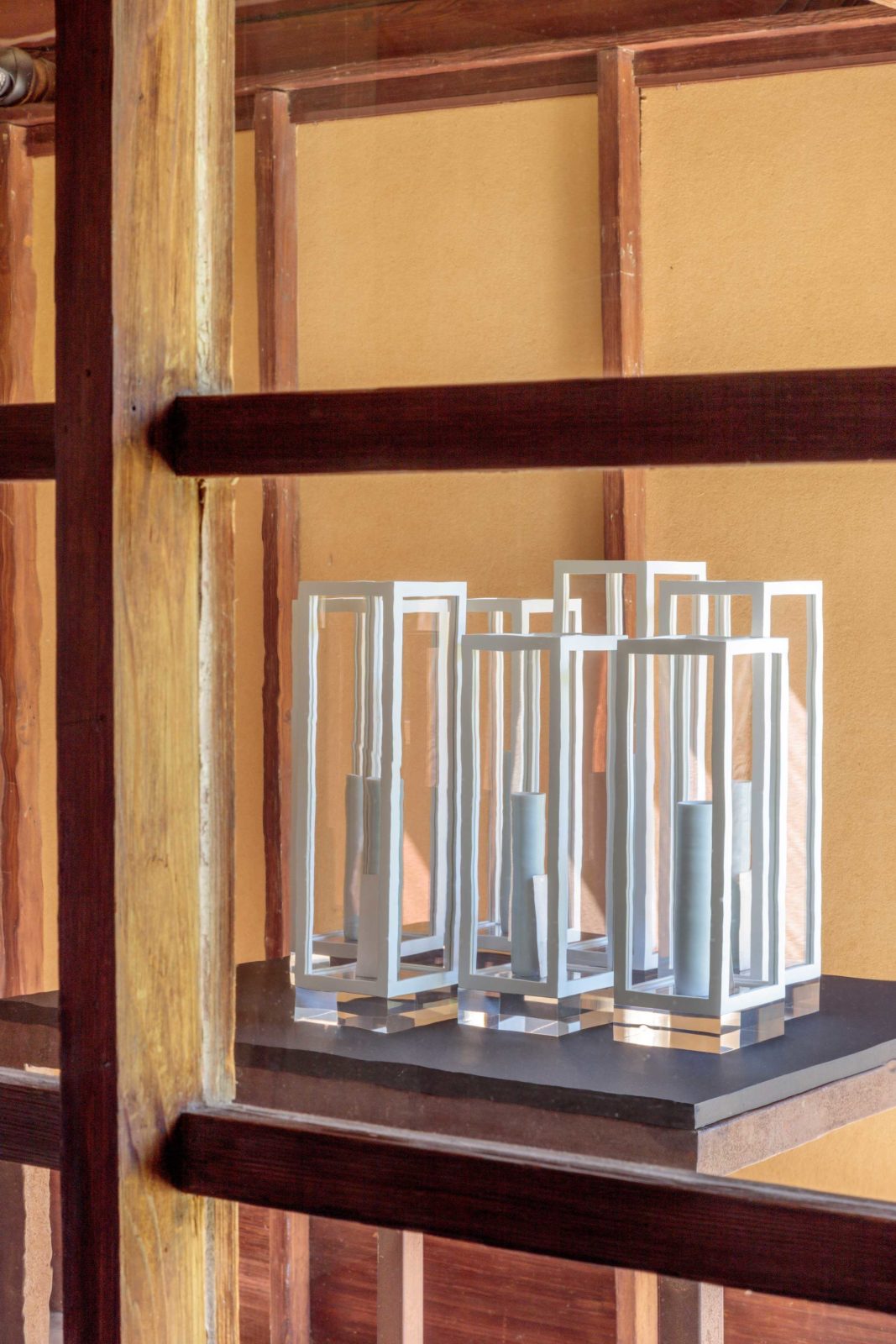
Lettres de Londres: Sur l'Optique de Mr Newton, 2015
7 porcelain vessels and 7 silver pieces in 7 aluminium and plexiglass vitrinesDimensions variable
– one way or other –
Schindler House, Los Angeles
15 September 2018 – 6 January 2019
De Waal’s first architectural intervention in America was at the Schindler House in West Hollywood: a landmark of West Coast Modernism, built in 1922 by Viennese émigré architect, Rudolph Schindler. Conceived as a modular, changeable live-work building for two families, it became a site of forward-thinking aesthetic, cultural and political activity, frequented by architects, dancers and artists from Frank Lloyd Wright to John Cage.
For de Waal, the Schindler House 'is an idea about beginnings. It stands as an attempt to create a place for both cooperative living and cooperative practice, to reset the conditions in which a modern family could live and experiment...The last decades of travelling to Vienna have made me think of what it might mean to be an émigré and build a house, to question what you bring with you when you start again so definitively.’ The exhibition included works which respond directly to the materials and spaces of the house, and a sound piece conceived with the composer, Simon Fisher Turner, 'a layered memory soundscape of Vienna through its Raumplan, its volumes’.
a new ground I & III, 2015
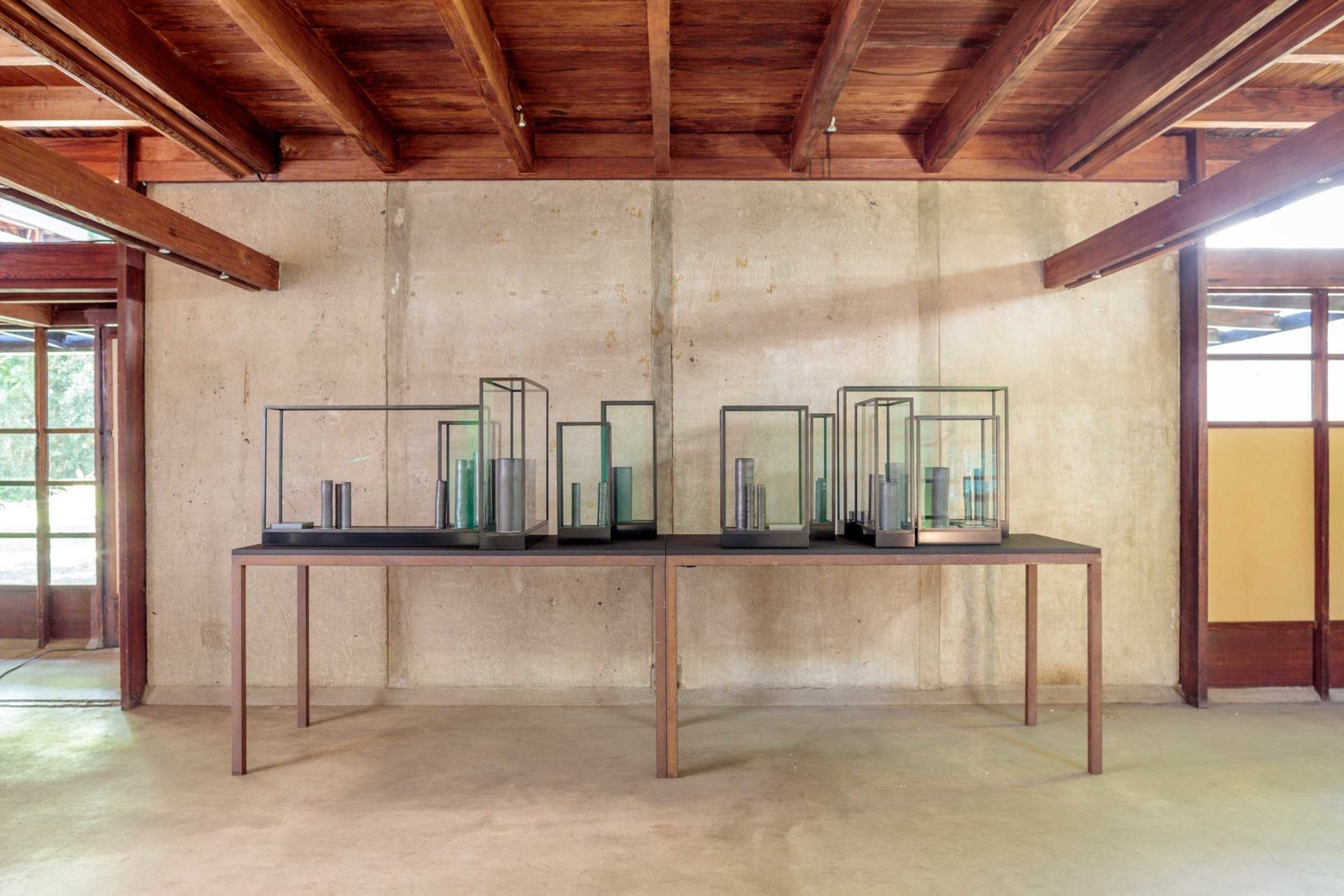
a new ground I & III, 2015
Porcelain vessels and Cor-Ten steel blocks in steel, Corian and plexiglass vitrinesDimensions variable
– one way or other –
Schindler House, Los Angeles
15 September 2018 – 6 January 2019
De Waal’s first architectural intervention in America was at the Schindler House in West Hollywood: a landmark of West Coast Modernism, built in 1922 by Viennese émigré architect, Rudolph Schindler. Conceived as a modular, changeable live-work building for two families, it became a site of forward-thinking aesthetic, cultural and political activity, frequented by architects, dancers and artists from Frank Lloyd Wright to John Cage.
For de Waal, the Schindler House 'is an idea about beginnings. It stands as an attempt to create a place for both cooperative living and cooperative practice, to reset the conditions in which a modern family could live and experiment...The last decades of travelling to Vienna have made me think of what it might mean to be an émigré and build a house, to question what you bring with you when you start again so definitively.’ The exhibition included works which respond directly to the materials and spaces of the house, and a sound piece conceived with the composer, Simon Fisher Turner, 'a layered memory soundscape of Vienna through its Raumplan, its volumes’.
a new ground I & III, 2015
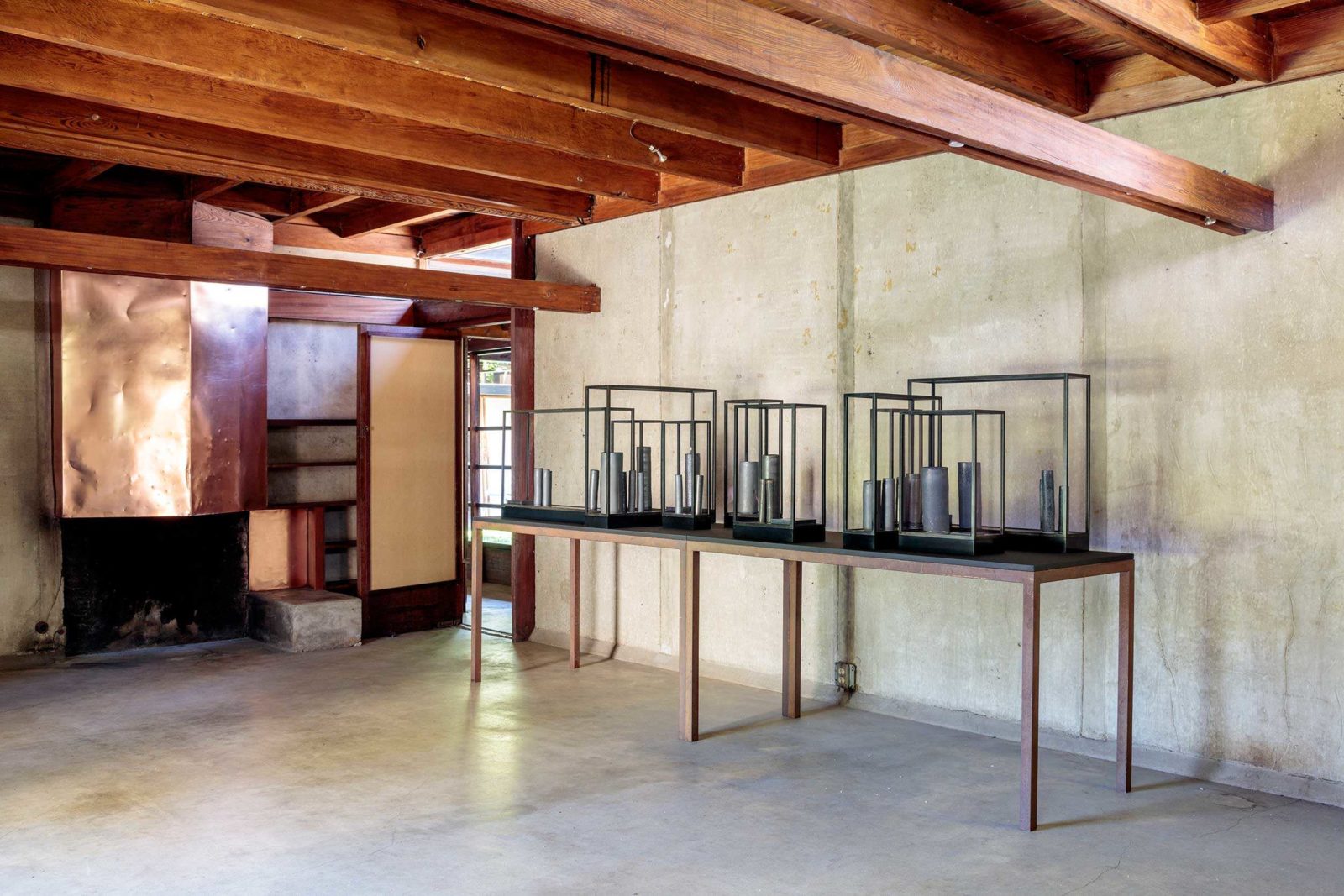
a new ground I & III, 2015
Porcelain vessels and Cor-Ten steel blocks in steel, Corian and plexiglass vitrinesDimensions variable
– one way or other –
Schindler House, Los Angeles
15 September 2018 – 6 January 2019
De Waal’s first architectural intervention in America was at the Schindler House in West Hollywood: a landmark of West Coast Modernism, built in 1922 by Viennese émigré architect, Rudolph Schindler. Conceived as a modular, changeable live-work building for two families, it became a site of forward-thinking aesthetic, cultural and political activity, frequented by architects, dancers and artists from Frank Lloyd Wright to John Cage.
For de Waal, the Schindler House 'is an idea about beginnings. It stands as an attempt to create a place for both cooperative living and cooperative practice, to reset the conditions in which a modern family could live and experiment...The last decades of travelling to Vienna have made me think of what it might mean to be an émigré and build a house, to question what you bring with you when you start again so definitively.’ The exhibition included works which respond directly to the materials and spaces of the house, and a sound piece conceived with the composer, Simon Fisher Turner, 'a layered memory soundscape of Vienna through its Raumplan, its volumes’.
a new ground, III, 2015
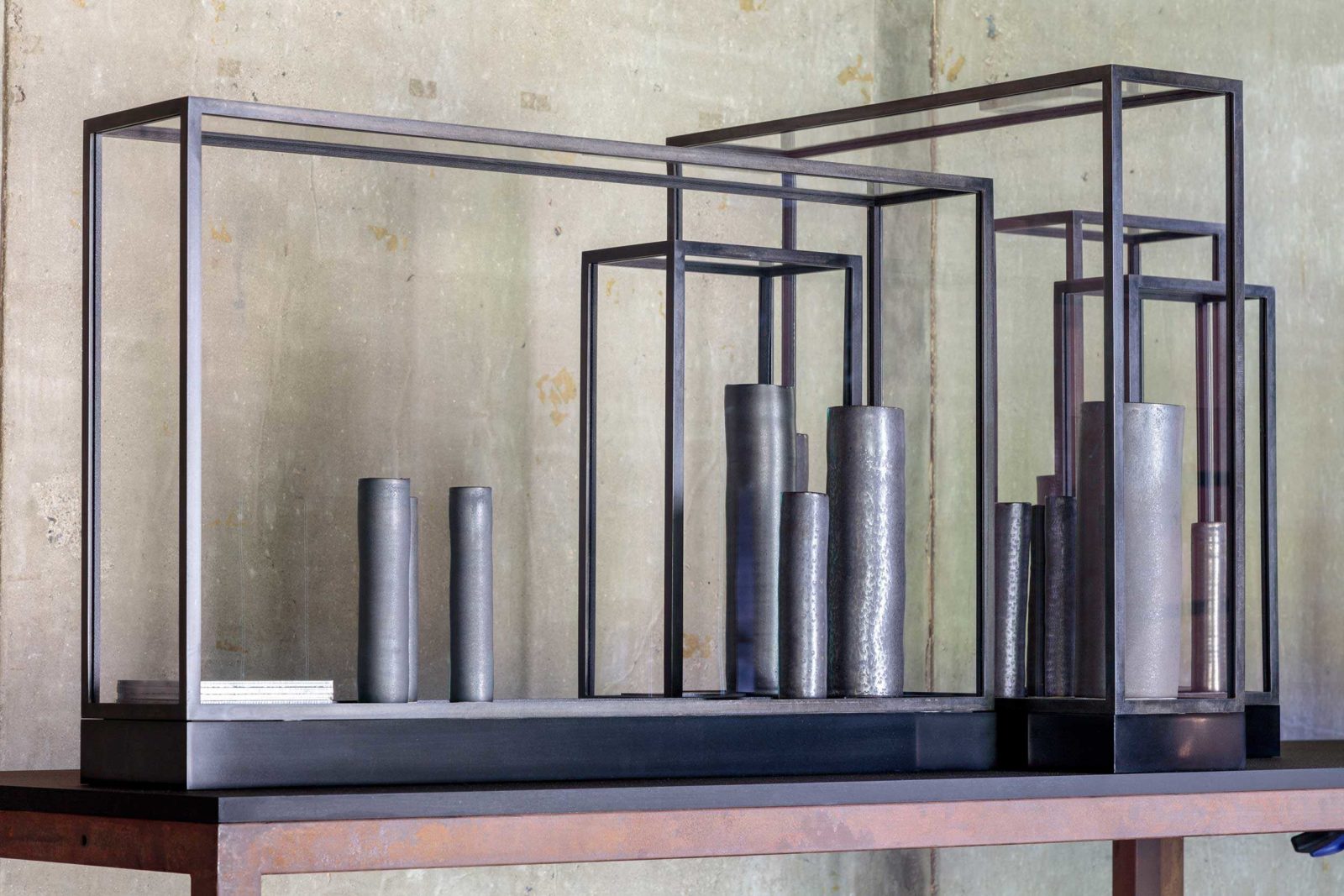
a new ground, III, 2015
14 porcelain vessels and 10 Cor-Ten steel blocks in 5 steel, Corian and plexiglass vitrines61 × 128 × 98.5 cm
– one way or other –
Schindler House, Los Angeles
15 September 2018 – 6 January 2019
De Waal’s first architectural intervention in America was at the Schindler House in West Hollywood: a landmark of West Coast Modernism, built in 1922 by Viennese émigré architect, Rudolph Schindler. Conceived as a modular, changeable live-work building for two families, it became a site of forward-thinking aesthetic, cultural and political activity, frequented by architects, dancers and artists from Frank Lloyd Wright to John Cage.
For de Waal, the Schindler House 'is an idea about beginnings. It stands as an attempt to create a place for both cooperative living and cooperative practice, to reset the conditions in which a modern family could live and experiment...The last decades of travelling to Vienna have made me think of what it might mean to be an émigré and build a house, to question what you bring with you when you start again so definitively.’ The exhibition included works which respond directly to the materials and spaces of the house, and a sound piece conceived with the composer, Simon Fisher Turner, 'a layered memory soundscape of Vienna through its Raumplan, its volumes’.
case study #1; a new ground I & III, 2015
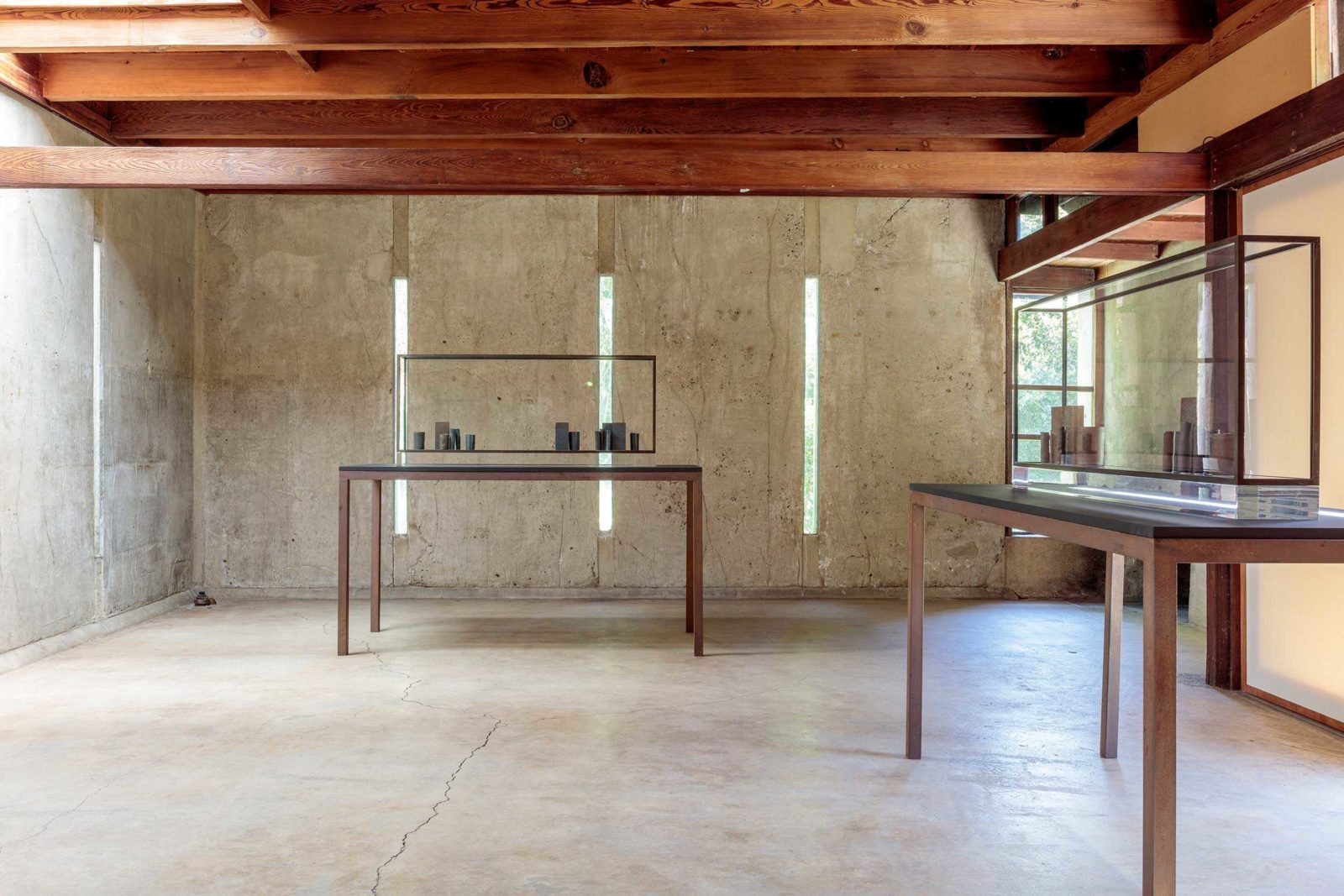
case study #1; a new ground I & III, 2015
– one way or other –
Schindler House, Los Angeles
15 September 2018 – 6 January 2019
De Waal’s first architectural intervention in America was at the Schindler House in West Hollywood: a landmark of West Coast Modernism, built in 1922 by Viennese émigré architect, Rudolph Schindler. Conceived as a modular, changeable live-work building for two families, it became a site of forward-thinking aesthetic, cultural and political activity, frequented by architects, dancers and artists from Frank Lloyd Wright to John Cage.
For de Waal, the Schindler House 'is an idea about beginnings. It stands as an attempt to create a place for both cooperative living and cooperative practice, to reset the conditions in which a modern family could live and experiment...The last decades of travelling to Vienna have made me think of what it might mean to be an émigré and build a house, to question what you bring with you when you start again so definitively.’ The exhibition included works which respond directly to the materials and spaces of the house, and a sound piece conceived with the composer, Simon Fisher Turner, 'a layered memory soundscape of Vienna through its Raumplan, its volumes’.
case study #1, 2015
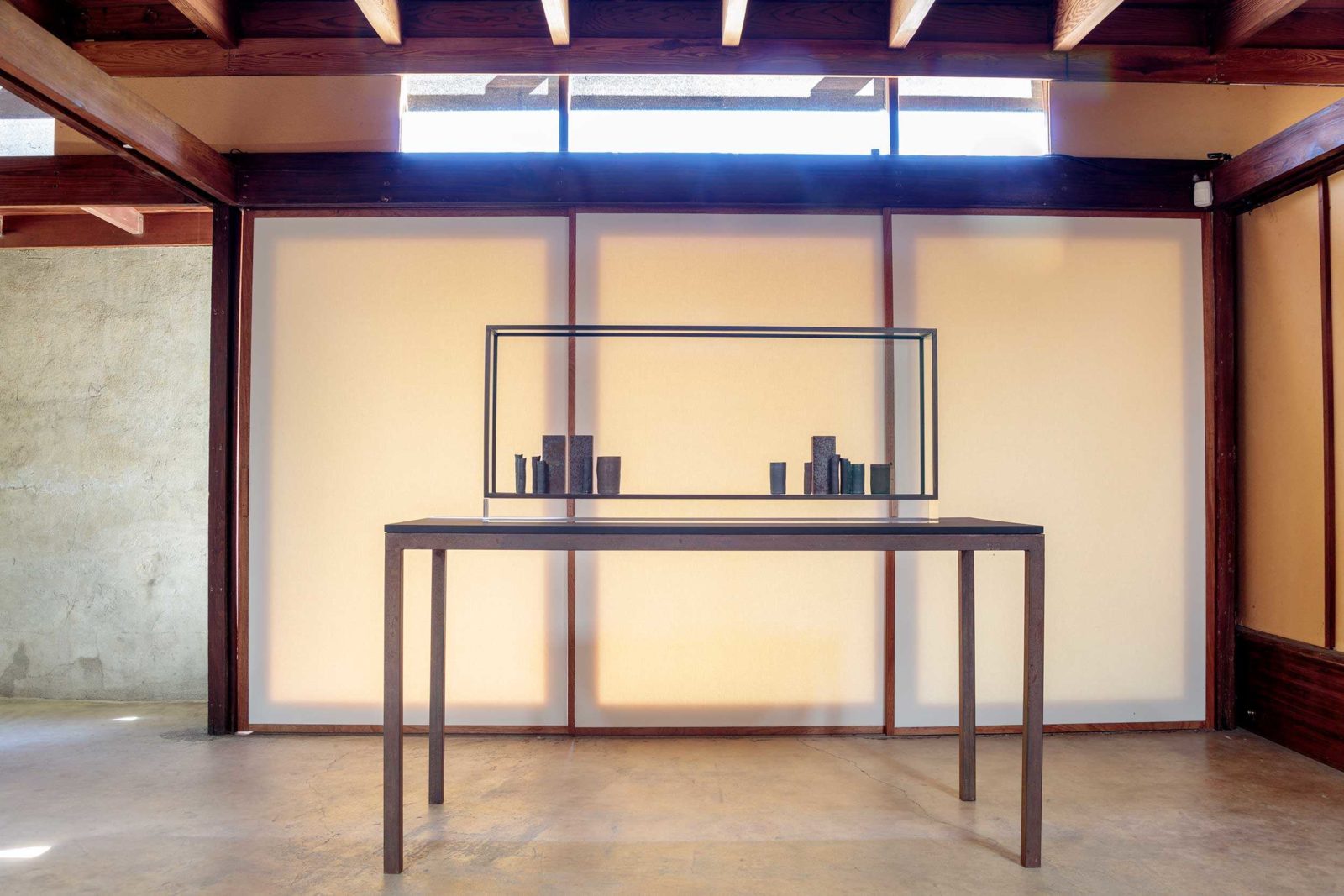
case study #1, 2015
14 porcelain vessels and 4 Cor-Ten steel blocks in a steel and plexiglass vitrine50 × 116 × 15 cm
– one way or other –
Schindler House, Los Angeles
15 September 2018 – 6 January 2019
De Waal’s first architectural intervention in America was at the Schindler House in West Hollywood: a landmark of West Coast Modernism, built in 1922 by Viennese émigré architect, Rudolph Schindler. Conceived as a modular, changeable live-work building for two families, it became a site of forward-thinking aesthetic, cultural and political activity, frequented by architects, dancers and artists from Frank Lloyd Wright to John Cage.
For de Waal, the Schindler House 'is an idea about beginnings. It stands as an attempt to create a place for both cooperative living and cooperative practice, to reset the conditions in which a modern family could live and experiment...The last decades of travelling to Vienna have made me think of what it might mean to be an émigré and build a house, to question what you bring with you when you start again so definitively.’ The exhibition included works which respond directly to the materials and spaces of the house, and a sound piece conceived with the composer, Simon Fisher Turner, 'a layered memory soundscape of Vienna through its Raumplan, its volumes’.

